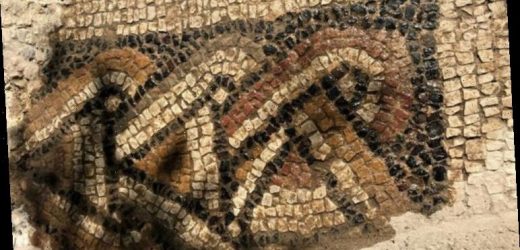Israel accidentally finds 'impressive' ancient mosaic
When you subscribe we will use the information you provide to send you these newsletters.Sometimes they’ll include recommendations for other related newsletters or services we offer.Our Privacy Notice explains more about how we use your data, and your rights.You can unsubscribe at any time.
Archaeology experts believe the unearthed mosaic is one of the biggest ever found in the country, and measures about 30 by 59ft (9m by 18m). The mosaic was exposed by archaeologists from the University of Jaén at the recently excavated El Altillo villa complex. Archaeologists were first drawn to the site after mosaic fragments – little tiles called tesserae – were found in an olive tree grove in the village of Rus, Andalusia.
The discovery led to a number of preliminary excavations and georadar scans by the university, on behalf of Andalusia’s Ministry of Culture and Heritage.
The archaeologists have now shared the incredible results of their dig, revealing the remains of a Roman villa dating to the fourth century AD.
The experts, however, believe the site was permanently occupied between the first and fifth centuries – about the same time the Western Roman Empire existed.
Photos from the dig showcase a beautiful mosaic obscured in parts by a layer of sediment.
The mosaic is composed of small, colourful tiles arranged into geometric shapes and patterns.
One such pattern, for instance, shows an intricate mix of black, white and red tiles interweaving together.
The archaeologists said this is one of the largest-known mosaics in the south of the Iberian peninsula.
Mosaics were a staple in Roman households and public buildings alike, often depicting scenes of nature or everyday life.
The tiled artwork can be found today at archaeological sites across the Mediterranean and Africa, as well as here in Britain.
Antiques Roadshow: Large mosaic valued at £10,000 by expert
Mosaics were assembled from thousands of colourful tiles measuring anywhere between 1mm and 1.5cm across.
According to Mark Cartwright of the World History Encyclopedia, the tiles were cut from marble, glass, pottery, shells and more.
On top of the tiled artwork, the excavation revealed a number of utility areas, including an oil mill.
The dig also excavated a pottery kiln used to make tiles and a cemetery right next to the villa’s ruins.
DON’T MISS…
‘Magic hand’ carving found in the West Bank dated to Kingdom of Judah [REPORT]
‘One-of-a-kind’ discovery proves Old Testament prophet right [INTERVIEW]
Boy, 11, discovers priceless artefact straight out of ‘biblical times’ [INSIGHT]
The excavation was carried out in February and March this year.
One of the key objectives of the dig was to locate and protect the site from destruction and looting.
Manuel Hueso, the mayor of Rus, has since declared the site an Asset of Cultural Interest.
He said: “We have made a very determined commitment to the heritage of Rus, not only to value what we consider to have the potential to publicise the history of the municipality, but also rewrite the history of the olive grove in the province.”
One of the world’s most impressive collection of mosaics is found near the Serbian town of Topola.
Inside St George’s Church, you will find more than 700 individual pieces of art covering about 3,570 square metres.
The Madaba Map in Jordan is also one of the most incredible depictions of the Holy Land in mosaic form.
Located inside of an early Byzantine Church in the town of Madaba, the mosaic offers insight into the ancient city of Jerusalem.
Source: Read Full Article






